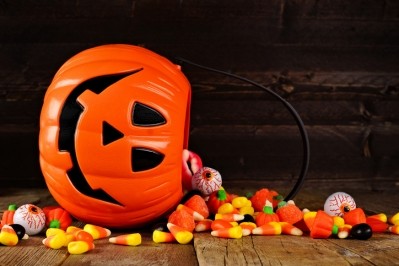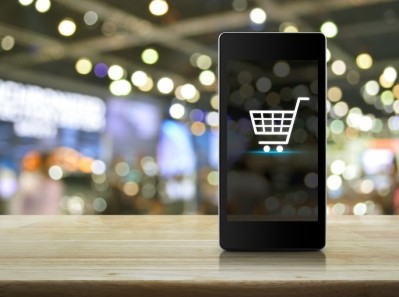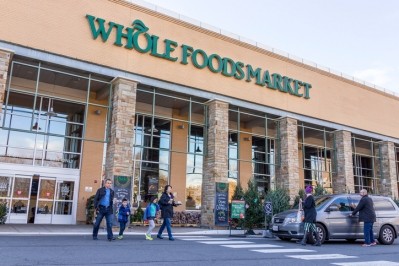NCA State of the Industry Conference 2017
E-commerce the ticket to Millennial candy and snack sales: Analysts
Speaking with ConfectioneryNews and its sister publication BakeryandSnacks during the recent State of the Industry Conference in Miami, Florida, IRI’s EVP of innovations, Larry Levin, said he believed online opportunities for candy and snack manufacturers are abound this year.
“There is so much opportunity in e-commerce right now. It’s really a matter of getting strategy right both from a brick-and-mortar point of view and from an online point of view,” Levin said.
According to a presentation during the conference, IRI pointed out that digital will influence 77% of all retail sales in 2017, and 71% of all product searches begin on retail websites, among which 55% of them are on Amazon.
IRI also predicted that 50% of CPG category market growth will be online by 2018.
Does e-commerce intimidate traditional retailers?
Despite a big portion of online sales coming from Amazon, small-to-mid-sized manufactures are also muscling up their own e-commerce platforms, putting pressure on traditional retailers.
“Grocery stores typically lack the technical resources to build their own e-commerce solution and don’t have knowledge base around how to efficiently utilize their brick and mortar stores to fulfill e-commerce orders,” founder and CEO of GrocerKey, Jeremy Neren, recently said in an email interview.
GrocerKey provides e-commerce technology as well as operational insights to grocery stores primarily in the Midwestern region of the US.
“E-commerce grocery as a whole is growing roughly 22% annually,” Neren added.
However, for confectionery and snack products in particular, the biggest challenges are issues around packaging and out of stocks, according to GrocerKey.
“The average grocery store is running 8.3% out of stocks, which is a major problem related to fulfilling e-commerce orders,” Neren said. “Packaging can be issue as well given that items are more likely to be damaged while picking/packing or in route during delivery.”
GrocerKey, which deploys e-commerce for Woodman’s Supermarket, is also launching with 11 other retailers it has under contract. Woodman’s generates $1.7bn worth of revenue each year.
“We’ll be approaching growth of sweets and snacks like all other categories, providing CPG engagement opportunities, such as digital end-caps, boosted search and category display, dedicated sponsored email content, recommended items triggered by adding to cart of a related item, recommended items during/after checkout,” Neren said.
E-commerce is an opportunity for ‘smaller guys’
IRI’s data showed that the top four candy manufacturers in the US, including Mars and Mondelēz, accounted for 70% of the total category sales in 2016 (online and offline), compared to 27% by other smaller national companies, and 3% by store brands.
However, small- to mid-sized manufacturers outgrew major players and store brands because they catered to consumer needs for health and wellness products, said IRI.
E-commerce presents a greater opportunity than challenge to those “smaller guys”, Levin added.
“They don’t have to worry about being able to sell their products to a retailer because they can manage their own relationships online. In fact, it makes their playing field smaller,” he said.
“Some of our research shows that smaller companies actually do better online than bigger companies… they can have the product fulfilled when an order comes in.”
Millennials go extreme on indulgent and healthy snacking
The multicultural nature of Millennials has made companies look for new ways to target this growing consumer demographic.
Levin said Millennials are the first group that will be disproportionally non-white in the US, and IRI research indicated that more than half of the confectionery growth comes from Hispanics, and a strong growth (16%) also comes from the Asian population.
In terms of purchasing behavior, Millennials tend to be either “extremely healthy or extremely indulgent,” Brad Hanna, EVP and director of business strategy at Barkley, told this site at the Miami conference.
Barkley is a business strategy firm that specializes in Millennial consulting. Its partners include major CPG firms such as Cargill and Hershey.
“A lot of healthy snacks with confectionery attributes are really growing [among millennials],” Hanna said.
But the stigma about healthy snacking, which it tends to be more expensive than regular treats, drives a certain amount of Millennials away.
“That’s going to be a continued concern. We call it ‘the demoralization of food’ where Millennials are so used to getting things for less… the food industry is really still behind. We’re looking to work with manufacturers to add more value and not price [to their products],” Neren said.
“We do a lot of conjoint studies and we found out which claims consumers are willing to pay for, and many of those claims actually don’t add cost,” he claimed. “A lot of them are ingredients-based, sourcing chocolate, even getting into quality grades.”
Neren added the “craft mentality,” largely observed in the beer market, is an up-and-coming trend for Millennial chocolate consumers.
How to target millennials online?
Market researchers at the conference also said that targeting Millennials via e-commerce can be challenging, because it is hard to create an exciting experience.
VP of merchandising at Dylan’s Candy Bar, Kristin Anderson, said at a panel discussion that personalization, such as customized candy selection and adding video content, can help e-commerce business growth.
This site previously reported independent candy retailer, It’s Sugar, has been driving impulse purchasing online by pairing relevant products through consumer data research. The company said it updated its web content daily to create “instant gratification” for consumers.
CEO of It’s Sugar, Jeff Rubin, also told ConfectioneryNews during a networking session that e-commerce still plays a small role in his business, but he has decided to look for new strategies to boost this part of the sales in 2017.













